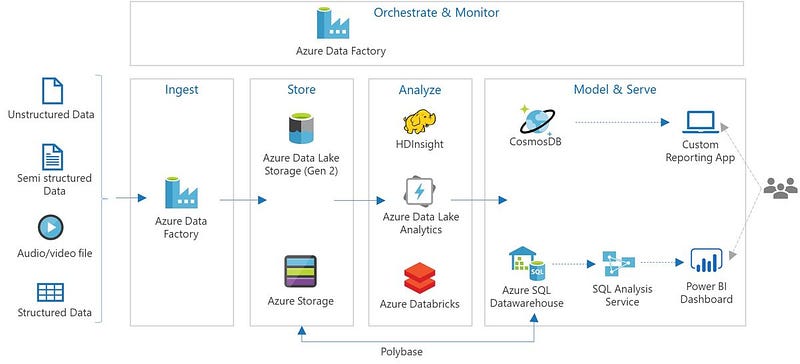Creating an Enterprise Data Lake on Microsoft Azure
Written on
Introduction to Azure Data Lakes
Data Lakes have made their mark in the business landscape, and Microsoft Azure provides a robust platform for establishing them. Understanding how to set up a Data Lake and the potential benefits it brings is essential for modern data management strategies.
To begin with, integrating data into a Data Lake is crucial. You'll need a data integration tool capable of handling a variety of formats and sources. Options such as Alteryx and Talend are popular, but Microsoft also offers Data Factory as part of its Azure suite.

Data then resides in Azure Data Lake. With Data Lake Storage Gen2, Azure Storage serves as the backbone for enterprise Data Lakes. It is engineered to manage vast amounts of data, accommodating multiple petabytes while providing support for significant throughput levels. Data Lake Storage Gen2 simplifies the handling of extensive datasets, allowing for the storage of unstructured and semi-structured data, which is a notable departure from traditional relational databases and Data Warehouses.
Data Lake vs. Data Warehouse: A Comparative Analysis
Data Lake Storage Gen2 offers data access and management capabilities similar to a Hadoop Distributed File System. This compatibility extends to environments like Azure HDInsight, Azure Databricks, and Azure Synapse Analytics.
The primary advantage of Data Lakes, aside from the generally low cloud costs and the ability to store diverse data formats, is their flexibility in data distribution. For instance, data can be distributed to Data Warehouses, leading to the concept of a Data Lakehouse—a hybrid of Data Lakes and Data Warehouses. Additionally, data housed here can be utilized by various systems, including those for machine learning, exemplified by Azure Synapse Analytics, which merges Data Warehouse capabilities with analytics.
Building Data Lakes in Azure - Dustin Vannoy - YouTube
This video discusses how to create Data Lakes using Azure, offering insights into best practices and tools available.
Towards a Data Lakehouse with Azure Synapse
If you're considering implementing a data platform within your organization, starting with a Data Lake can set the stage for evolving into a Data Lakehouse. This transition can be achieved by integrating a Data Warehouse and machine learning systems into your architecture. Azure equips you with the essential tools and capabilities for this journey.
Azure Data Lake Design and Implementation Patterns - YouTube
In this video, the focus is on strategies for designing and implementing Data Lakes in Azure, highlighting effective patterns for deployment.
Conclusion
In summary, Azure provides a comprehensive environment for establishing and managing Data Lakes, which can eventually evolve into sophisticated Data Lakehouses. With the right tools and strategies, you can leverage Azure's capabilities to enhance your organization's data management practices.